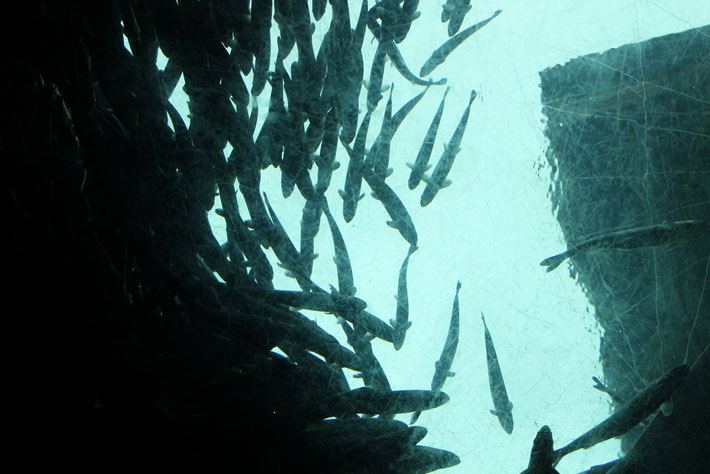
Global consumption of fish has doubled since the 1970s. In the US we’ve witnessed a boom in the popularity of sushi restaurants, the Mediterranean Diet is all the rage, and the benefits of omega-3 fatty acids are hailed on every talk show. It’s no wonder more Americans are seeking fish is an important part of a healthy, well-rounded, not to mention delicious diet.
As healthy as fish can be for our bodies, fishing can be a real problem for our oceans. Overfishing and other unsustainable fishing practices are the greatest current threat to our oceans, according to Ocean Wise. Aside from direct damage to the ocean, the carbon footprint of fishing can be huge. “Over 95% of the seafood consumed by the community of Santa Barbara, including UCSB, is imported. Additionally, at least 95% of the seafood caught locally is exported,” reports the Associated Students Coastal Fund. And Santa Barbara is a coastal area with fisheries nearby! Imagine the energy expenditure, not to mention the cost, of such a process.

Enter the Santa Barbara Sustainable Seafood Program. Run by the Santa Barbara Museum of Natural History, their mission is to help the public make more informed decisions about the seafood we eat. Local restaurants and markets gain free membership to the program by taking a pledge to take steps to avoid unsustainable seafood. In return, the program helps members make the switch to sustainable seafood, and promotes member businesses by letting the community know that they provide consumers with an alternative to unsustainable seafood. Each restaurant and market gets a certificate and a sticker for their window to signify their participation in the program. In addition the Sustainable Seafood Program promotes participating businesses through exhibits, banquets and festivals held at the Ty Warner Sea Center.
An exciting development this spring: A Community Supported Fishery Program. Like a farm CSA, the CSF will provide local seafood shares directly to the consumer. The program, funded by the Associated Students Coastal Fund, starts this spring at the University of California Santa Barbara, and will go community-wide next year.
A local fisherman’s perspective on the CSF:
“California fisheries have some of the most stringent regulations and well managed fisheries in the world, and we (fishermen) embrace those regulations if it protects our marine ecosystem while providing food for the community. A CSF provides an opportunity for us to fish less and make more money to support our families.” - Stephanie Mutz, a commercial fisherman and Research Coordinator of Commercial Fishermen of Santa Barbara
The future looks bright for a program that helps local fishermen, the community and the ocean.
